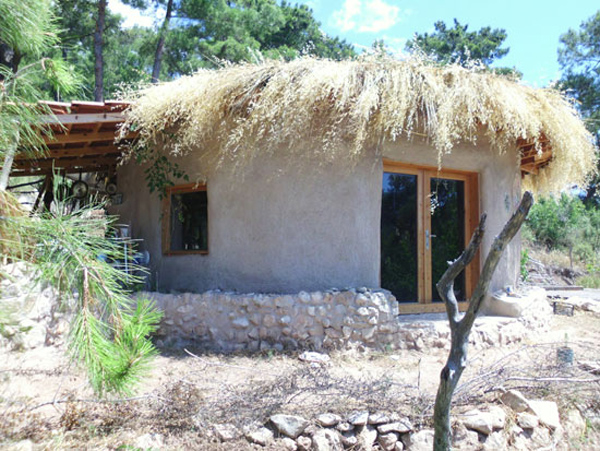
“Four years ago, I was camped upon a hill in Turkey watching the canvas of my tent buckle ominously. The wind howled, and rain started to drip onto my forehead. I’d been living in the tent for six months, but winter had suddenly arrived. I needed a house. Fast.
Considering the urgency, I was picky. I wanted something beautiful, round and environmentally friendly. The technique I chose was earthbag. I didn’t regret that choice at the time of building. Four earthquakes later, I still don’t.
It might have been more by luck than judgment, but earthbag building has proven itself perfect for my experience level, my climate, the topographical features of my land and my aesthetic taste. It’s easy to master for first time builders, and fairly invincible in terms of strength.
The technique has numerous other benefits, some of which I have learned as time goes by. So here’s my list of why you might want to think about an earthbag home.
1. Earthquake resistance. Earthbag is the most indestructible sustainable building technique in existence. Earthbag buildings are so tough they have been known to damage the earthquake-testing equipment and show no sign of structural weakness. This is why the method is now being pioneered in Nepal in the wake of the earthquake disasters this spring. Turkey is also a seismic country. I’ve sat through four quakes of over 5.0 and not even seen a crack in the plaster. By contrast, my neighbour’s concrete wall built by professionals suffered a gaping hole after a quake two years ago.
2. Simplicity. The technique itself is so straightforward, even I mastered it (I hadn’t so much as put a shelf up six months prior to commencing the build). There’s not much more to it than filling up sacks with wet mud, laying them end to end and squashing them flat. Rings of barbed wire are run between the layers to prevent them from slipping away from each other.
3. Energy efficiency. Earthbag homes boast excellent thermal mass. They are particularly suited to hot dry, Mediterranean or temperate climates, as the thick mud walls regulate the temperature. An earthbag house stores both heat and cool. There’s no need for an air conditioner in summer, and in winter – if you place your windows strategically to absorb the maximum sunlight – your house is cozy and warm long after the sun goes down. On the coldest days of the year, I burn my wood stove for about three hours each evening.”
More at Mother Earth News
One note: I would rephrase “sacks with wet mud” to “sacks or bags with moist subsoil”. If it’s too wet with water squishing out the bags then you can’t keep laying earthbags on top of each other until they’ve hardened up. With moist soil you can keep right on building day after day.
Also note, this earthbag house by Atulya Bingham has helped push this building technology forward in Nepal. Because no one has hundreds of thousands of dollars for testing, it really helps to have anecdotal evidence like this house that has survived numerous earthquakes. That’s why her house is in the slideshow that’s being distributed to thousands of people across Nepal.

I forgot to mention that Atulya has a book that chronicles her home building process. We profiled her book a few months back: Mud Ball – How I Dug Myself Out of the Daily Grind https://naturalbuildingblog.siterubix.com/mud-ball-how-i-dug-myself-out-of-the-daily-grind-atulya-k-bingham/
Thanks for sharing Owen. Honoured to be the earthquake guinea pig:)